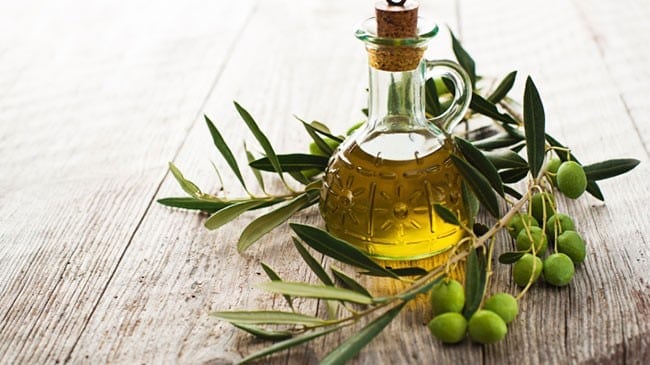DIET, Uncategorized
Olive Oil: Everything you need to know
Olive oil: Everything you need to know
Olive oil is the oil derived from the fruit of the olive tree.
Olive oil is a key element of the Mediterranean diet and considered healthy food product because of its content of monounsaturated fat. It is the oil of the olive fruit. Extracted by pressing the olives, which should be collected prior to their final maturity, ie when are green-purple, as the quality of the oil is much better than that of the oil extracted from them perfectly ripe fruit. The olives are picked by hand or, when completely ripe, by shaking the tree. Stored in wooden containers or in piles, in well-ventilated areas to prevent fermentation.
The oil produced in mills, cold or warm olives compression. In several cases, then is filtered.
Modern mills are independent industries which have plenty of water for cleaning and processing of olives. The various areas of the mill are well ventilated, dry and have thermal insulation. There are, however, some small mills attached to farms, where the processing is done with traditional systems • called liarouvia or liotrivia.
In mills processing begins by weighing, the separation and washing of olives. Olives, placed in wooden crates, transported in elevators in a large basin located in a hill of olive mill. From there fall to funnel leads to the mill, consisting of crushers or millstone. After crushing and pressing remains the paste called elaiopoltos.This paste is then malaxed (slowly churned or mixed) to allow the microscopic oil droplets to agglomerate. The oil is then separated from the watery matter and fruit pulp with the use of a press (traditional method) or centrifugation(modern method). After extraction the remnant solid substance, called pomace, still contains a small quantity of oil.
The grades of oil extracted from the olive fruit can be classified as:
- Extra-virgin olive oil Comes from virgin oil production only, and is of higher quality: among other things, it contains no more than 0.8% free acidity (see below), and is judged to have a superior taste, having some fruitiness and no defined sensory defects. Extra-virgin olive oil accounts for less than 10% of oil in many producing countries; the percentage is far higher in the Mediterranean countries (Greece: 80%, Italy: 65%, Spain 30%).
- Virgin olive oil Comes from virgin oil production only, but is of slightly lower quality, with free acidity of up to 1.5%, and is judged to have a good taste.
- Refined olive oil is the olive oil obtained from virgin olive oils by refining methods that do not lead to alterations in the initial glyceridic structure. It has a free acidity, expressed as oleic acid, of not more than 0.3 grams per 100 grams (0.3%) and its other characteristics correspond to those fixed for this category in this standard. This is obtained by refining virgin olive oils with a high acidity level and/or organoleptic defects that are eliminated after refining. Note that no solvents have been used to extract the oil, but it has been refined with the use of charcoal and other chemical and physical filters. Oils labeled as Pure olive oil or Olive oil are primarily refined olive oil, with a small addition of virgin-production to give taste.
- Olive pomace oil is refined pomace olive oil often blended with some virgin oil. It is fit for consumption, but may not be described simply as olive oil. It has a more neutral flavor than pure or virgin olive oil, making it unfashionable among connoisseurs; however, it has the same fat composition as regular olive oil, giving it the same health benefits. It also has a high smoke point, and thus is widely used in restaurants as well as home cooking in some countries.

 ΕΛΛΗΝΙΚΑ
ΕΛΛΗΝΙΚΑ
